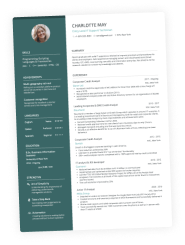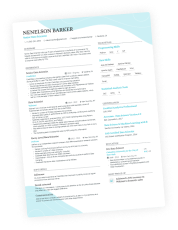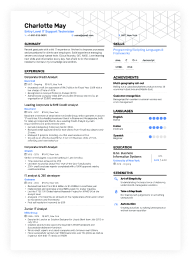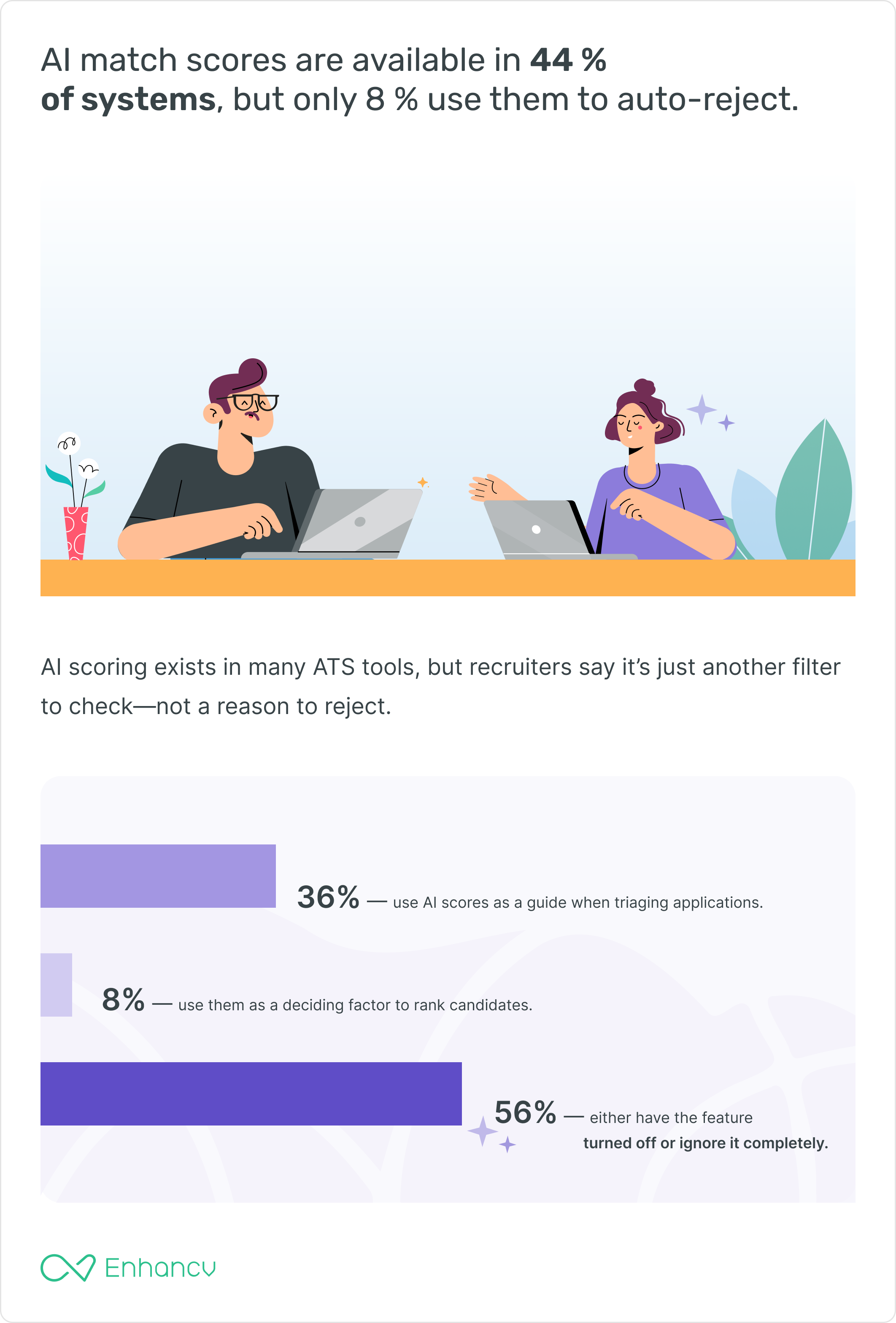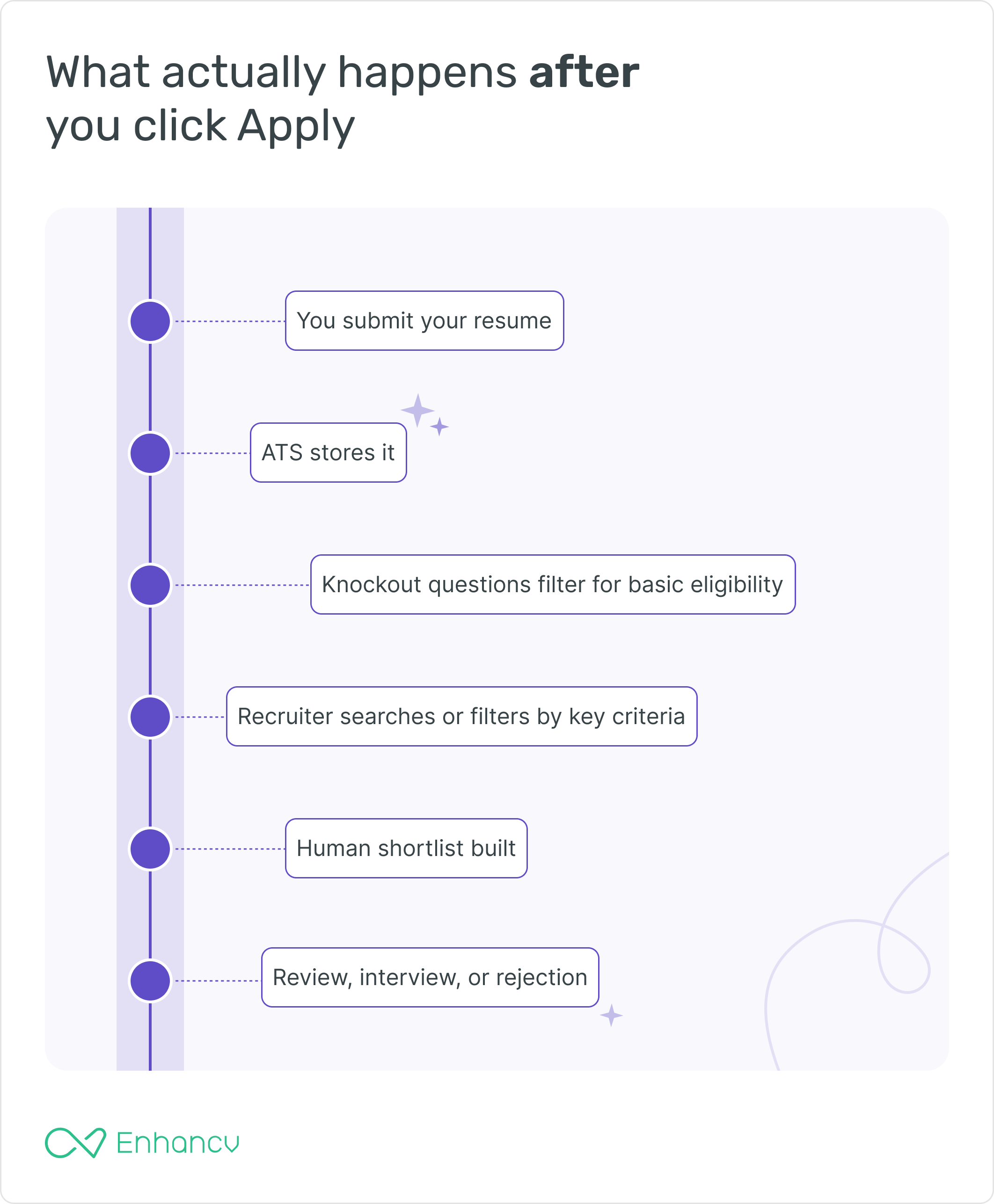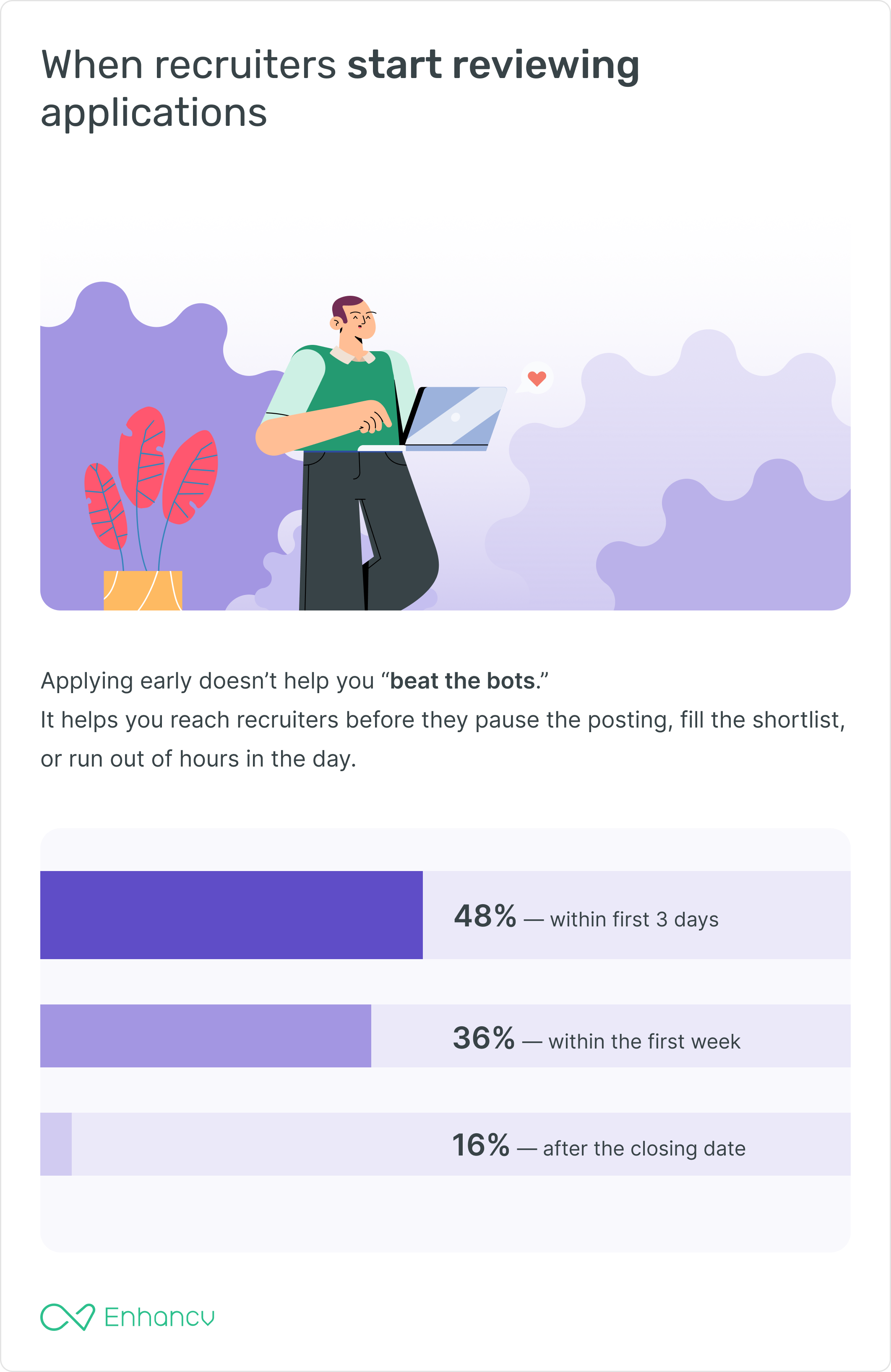You’ve probably seen the claim: “75% of resumes are rejected by Applicant Tracking Systems before a human even looks.” It’s been repeated in countless articles, videos, and career blogs—usually without a single source or piece of data to back it up.
So we decided to ask the people who actually use ATS systems every day.
Enhancv interviewed 25 U.S. recruiters across industries—from tech to healthcare to finance—to uncover what really happens after you apply. Nearly all said the same thing: ATS systems don’t reject resumes. People do.
The culprit isn’t software, but scale—the sheer volume of applications that no one can realistically read. What job seekers mistake for AI rejection is usually human overload. And understanding that changes everything about how you should write and send your resume.
Do ATS systems really reject resumes automatically?
If you spend any time on LinkedIn, you’ve seen the claim that most resumes never make it past the ATS.
We ran 25 structured interviews across healthcare, tech, construction, CPG, education, and retail. The organizations ranged from 120 to over 50,000+ employees and used more than 10 ATS platforms, including Workday, iCIMS, Greenhouse, Bullhorn, BambooHR, SuccessFactors, Teamtailor, and Phenom.
Of those recruiters, 23 (92%) said their systems do not auto-reject resumes for formatting, content, or design.
Many teams use match scores/filters to prioritize who gets reviewed first. Low score ≠ auto-reject, but in high-volume roles, it can push you to the bottom of the pile.
Here’s how to better understand what’s happening inside the ATS—without the mystery or the hype.
First, let’s anchor the terms so we’re talking about the same thing:
- Automatic rejection means the ATS moves a candidate to “rejected” without human review.
- AI/content auto-rejection is that same action, but triggered by explicit rules (e.g., match threshold or required-skills count).
- Knockouts are yes/no eligibility checks (work authorization, required license, location). Teams can route failures to a human—or flip a setting to route them straight to reject.
Now, what our data actually shows:
- AI/content auto-rejection configured: 8% of recruiters.
- Knockouts used when present: 100% of recruiters.
In other words, eligibility checks are universal, and content-based auto-reject is rare and only appears where someone has deliberately turned it on.
When teams do enable content-driven auto-reject, it looks like real requirements—not “font police” rules.
Those can include:
- A threshold rule, such as “Reject if resume match < 75%.”
- A skills gate, like “Reject if fewer than 7 of the 10 required technical skills are present.”
So, this isn’t about templates or design—it’s about job requirements. Most recruiter teams still use scores and filters to sort who they review first, but only a small minority use them to decide who never gets seen.
For the skeptic: If “ATS rejects most resumes” were broadly true, we’d expect widespread content-based auto-rejection. We only saw 2 of 25 using it. The common pattern is knockout rules for eligibility and human triage guided by scores.
Where the “ATS rejection” myth comes from
When we asked recruiters where they’d heard the claim that ATS rejects resumes, 68% pointed to job seekers who saw it on LinkedIn or TikTok, and 20% blamed career coaches and resume blogs recycling outdated advice. Another 12% mentioned mainstream media headlines that never cited a source.
A few respondents—about one in ten—said they’d never even heard of the myth until this interview. For them, it’s simply not part of how recruiting works.
“It's such a false narrative to me— that people don't understand— and it's taking advantage of them,” Reggie Martin, an LA-based recruiter, told us. “And I think it's really a shame that people resort to that scare tactic.”
“The ATS systems that I've worked with don't automatically disposition people—we have to go in and do it,” says Charkin Whitehead, recruitment relationship manager at Allegis Global Solutions.
Crystal Hughes, director of talent at Accuserve Solutions, added, “We don’t want to miss out on a qualified applicant.”
Kelly McAvoy, a recruiter in consumer packaged goods, doubled that: ”We're still true believers in making sure we review all applicants. We definitely use filters so that we review the strongest candidates first, but we look through everything.”
So what about those mysterious AI match scores—the percentages that claim to measure how well your resume fits a job?
Most HR teams treat them as signals, not verdicts—but a small minority do rely on them as a hard filter.
“My rule when I do follow the AI suggestions is that I will still look at the candidates—I'll still look at their resume to ensure that it [the AI score] is accurate before I engage with the candidate,” said Elizabeth McGee, talent acquisition manager in a software company.
Alicija Padilla, a senior healthcare recruiter, agreed: “I would look at it, but I always do my own assessment as well.”
Jared Harris, from Sutter Health, mentioned his company’s ATS includes a “fit score,” but added, “We’re not really trusting it… It’s hit and miss.”
“We just don't have an AI component that is smart enough to [reject resumes based on a match score]—or we're not using anything like that. The only way to reject is manually on our end,” added Gabriella Solis, who works in real estate.
In short, ATS software might rank you, but it rarely rejects you. The myth survives because “AI matching” looks decisive from the outside. Inside the system, it’s mostly a sorting hint for exhausted humans, not a digital bouncer guarding the door.
If the ATS isn’t rejecting you, what is?
If your resume vanishes into silence, it’s natural to suspect the software. But according to recruiters, the real “villain” isn’t automation—it’s volume.
Nearly every recruiter we spoke to said they manually review applications. The problem is, there are far too many of them. Roles in customer service, software development, sales, healthcare, and marketing can pull in hundreds—sometimes thousands—of applicants within a few days.
“[For a] data analyst position, if we left it open for a week, I think we would have 400 or 500 resumes,” said Andrew Hills, a talent acquisition manager from the software development industry.
Elizabeth McGee described a similar flood: “130 plus—and sometimes that happens in a couple of hours—sometimes overnight.”
Charkin Whitehead from Allegis Global Solutions has seen even higher numbers: “There are a lot of positions where I get 2,000 applicants—those software development engineers.”
The reality is that even in companies that promise “every resume reviewed,” many never get seen. Recruiters have minutes—sometimes seconds—to scan each one. Once they have a strong shortlist, they stop.
“I hate to say it, first-come, first-served, just because I don't have the time to go through and review that many resumes.” Vickie Marandina, vice president of human resources at a senior lifestyle company.
When automated filters are used, they’re almost always knockout questions that help recruiters save time without risking a bad hire.
For Vickie, one question does most of the heavy lifting: “The knockout question that honestly knocks out most—for our roles that we're posting now, which are more technical roles, I’d say probably 30%—is, ‘Are you a resident of the United States and do you require employer visa sponsorship?’”
And Kristin Palumbo, a senior recruiter in educational publishing, explained how her system filters for minimum qualifications: “If the position requires a bachelor's degree, we’ll say, ‘Do you have a bachelor's degree?’ If they don’t, then they would be automatically knocked out of the process because they don’t meet the minimum qualifications for the position.”
These knockout filters handle the black-and-white decisions. Everything else still sits in the system, waiting for human review.
So if you never hear back despite meeting the criteria, it’s not because a robot deleted you. It’s because a human recruiter, buried under hundreds of unread applications, simply ran out of time.
According to Enhancv’s data and recruiter interviews:
- Entry-level and administrative roles attract an average of 400–600 applicants per opening.
- Customer service and remote support positions often surpass 1,000 applications in their first week.
- Tech and engineering jobs—especially remote or hybrid—can reach 2,000+ applications before the recruiter even starts screening.
- Specialized or senior positions tend to stay below 200 applicants, but those candidates are vetted more deeply.
The pattern is clear: it’s not the ATS thinning the pile—it’s the pile itself.
Your resume competes in a sea of hundreds, filtered first by knockout questions, timing, and basic keyword relevance, not by formatting or design.
*Ranges reflect combined recruiter estimates across 25 interviews, not Bureau of Labor Statistics (BLS) data.
Does applying early help your job application get seen?
If applicant tracking systems aren’t the obstacle, timing is. Once a job post goes live, the clock starts ticking—not because of automation, but because of human bandwidth.
In our sample, about half of recruiters (52%) said applying early improves a candidate’s chances, simply because they review applications in the order they arrive.
Another one in three (36%) said it doesn’t make much difference, since they review in batches or wait until a posting hits a certain threshold. The rest admitted it depends on the role and workload.
So, applying early doesn’t “beat the system.” It just catches recruiters before they’re overwhelmed.
Danielle V., who recruits for Fortune 500 companies and the military, put it bluntly: “You're getting 3,000 or 4,000 people applying for one role—and they may still keep that role open on LinkedIn or wherever you see it. But the earlier you can see the role and apply for it, the better your chances that you're going to be one of the candidates whose resume actually gets looked at.”
A recruiter in the CPG industry described a similar situation: “We do have positions that receive over a thousand resumes, and sometimes we turn the posting off just so that we can get through them. If you're in that first bulk—let’s say the first 300—that’s still a lot of resumes. But if we find strong candidates there, we’ll probably start interviewing before we even look at the rest.”
For Stan, an HR professional in New York, the pattern is the same: “If we reached numbers like 500 or 1,000, we’d simply stop the process after a few days and not continue reviewing new resumes coming in.”
Mike Goodman, a tech recruiter in San Diego, explained how recruiters handle that scale: “Maybe if I had like 500 resumes to go through—for example, if it's a remote finance role that’s getting inundated with applications, and I was getting hundreds a day—I'd probably pause or unpost itto go through the first batch. I don't want it to go to 2,000—I want to be able to see them.”
By the time late applicants hit “submit,” the shortlist is often full, or interviews have already begun.
What recruiters wish job seekers understood about ATS
If there’s one message recruiters wish job seekers could hear, it’s this: the ATS isn’t your enemy—or the reason your resume was rejected.
Across all 25 interviews, HR managers described applicant tracking systems as a tool for organization, not elimination. They don’t want “ATS-proof” resumes—they want resumes that make their jobs easier to do.
Here’s how (based on Enhancv’s data):
How to improve your resume to meet recruiters’ expectations
| What recruiters value most | % of recruiters who mentioned |
|---|---|
| Clear, skimmable structure | 92% |
| Relevant experience and skills | 88% |
| Natural use of keywords (not keyword stuffing) | 76% |
| Short bullet points instead of long paragraphs | 72% |
| Simple, consistent formatting | 68% |
| One to two pages maximum | 64% |
| Achievements with measurable results | 52% |
Totals exceed 100% because recruiters cited multiple items.
Most recruiters couldn’t care less about “beating the bots.” What matters is whether your resume is easy to read, relevant to the role, and written like it was made for a human being—because it is.
“I'm seeing a big uptick in the exact same format that I know is coming from ChatGPT. It's the five key things—each one has a bolded theme and then something in there. I know it. I use ChatGPT all the time, so I can see it. And I'm like, okay, I love ChatGPT—not hating on you for using it—but give it that human eye. Give it that once-over. Make sure what you're putting is accurate,” said Kassandra, a talent acquisition manager in renewable energy.
Lack of personalization is a deal breaker, confirms Kristin:
“Make sure that you're tailoring it [your resume] to the position you're applying for because I get a lot of people that you can tell are just kind of mass applying to places—and sometimes they even forget to change the position's name. Somebody like that is definitely going to get rejected from me because it shows they don't have the attention to detail.”
Many recruiters said they waste time downloading resumes that look misaligned or overly designed. That doesn’t mean creative layouts are bad—it means poor readability costs attention.
What really makes recruiters notice you—and what makes them scroll past
- 32% (8/25) recommend proactive outreach on LinkedIn (InMail, mutual connections, referrals) to cut through volume.
- 16% (4/25) say a thoughtful cover letter can tip the decision, especially when experience is borderline.
- 20% (5/25) flagged overly designed, Canva-style resumes (with heavy graphics, fancy fonts, and pictures) as a turn-off because they’re harder to scan.
- 8% (2/25) called out seven or eight-page resumes as an instant red flag—most want one or two pages.
- 8% (2/25) specifically noted the pet peeve: listing jobs from oldest to newest instead of in reverse chronological order.
That’s where Enhancv’s design philosophy comes in. Enhancv’s templates are built to be both ATS-readable and recruiter-scannable: clean sections, customizable structure, and subtle formatting that keeps your content clean and easy to parse.
More importantly, the Job Tailoring feature helps you surface the exact skills and experiences recruiters search for.
The result is resumes that get seen, understood, and respected by both the ATS and the HR professional behind it.
Why everyone still believes the ATS rejection myth
It’s easy to see why the idea of automated rejection caught on.
You spend hours polishing a resume, click “Apply,” and get either an immediate rejection email or no reply. After that, it’s almost comforting to imagine that software, not a person, was responsible.
Recruiters understand that instinct. They’ve seen how discouraging the modern job hunt can be.
“I understand why candidates think what they think, and it’s absolutely going to grow. It's not going away. We're going to keep using AI because it does help us a lot—but it does leave a bad taste in the mouth of candidates when these things happen, or when they get a robocall from an AI recruiter.
It's not the same and it makes mistakes. You give answers to the questions and it's not picking up what you said. And so you're like, ‘Well, I can't really trust that it's even reading my resume, right?’" — Danielle
When rejection feels random, the human mind looks for a cause. Algorithms make a convenient one.
As one software development recruiter explained, “With all the layoffs that have been going on, and a lot of frustration with the applications [...] Putting out lots of applications, not getting any response, and assuming that nobody's actually looking at the resume.”
Fear spreads faster than facts
In Enhancv’s survey, 68% of recruiters said they’d first heard the “ATS rejection” myth from job seekers who saw it on social media. Another 20% mentioned career coaches and resume-building companies repeating it—often to sell “ATS-optimized” templates.
Even traditional media sometimes amplifies it:
“I’ve seen a couple of articles people have shared on sites like MSNBC or Yahoo. They’re usually trying to sell a service or promote themselves—saying, ‘I can teach you how to beat the ATS.’ And I’m like—no, you can’t.” —Reggie, who recruits with iCIMS
There’s a kernel of truth—just not the one people think
Sometimes automation is involved, but not in the way most applicants imagine.
It’s true that some systems can automatically sort or reject resumes based on preset criteria, but that setup is rare. In our sample, only 8% of recruiters said their ATS automatically rejects resumes.
Stan, an HR professional in New York, was one of them:
“One of the most fundamental functions of ATS systems is to save time for recruiters by sorting through resumes and basically rejecting those deemed not to be a good match. This allows the person at the other end of the ATS to focus on screening resumes of applicants who meet the criteria.”
Stan isn’t wrong—saving time is exactly what these systems were built for.
Where his view differs from most others we interviewed is that many recruiters prefer to use ATS tools as filters, not gatekeepers.
“The ATS is only going to reject you if you don't meet the position requirements. It's not going to just reject you because your resume formatting is off or you didn't have a secret word in there,” added Reggie, who hires for big-box retailers and tech companies.
The truth is, the myth survives because it offers an easy explanation for something that feels deeply unfair.
Recruiters don’t blame job seekers for believing it—they understand why it caught on. But they do hope the conversation moves past fear and clickbait toward something more useful—an honest look at how modern hiring really works.
The truth at the heart of the ATS myth
Most resumes aren’t rejected by a robot—they’re crowded out by volume, timing, and relevance. The fix is clarity, tailoring, and respect for recruiters’ time.
What this means for job seekers:
- Write for the first 10 seconds of human revision. Lead with role-relevant skills and proof (metrics). Create a strong opening statement. Keep bullets short. Stick to one or two pages.
- Tailor lightly, but consistently. Mirror the job’s core skills naturally.
- Mind timing. If a role is less than 48–72 hours old, apply now. If it’s older, make the headline and summary ultra-relevant.
- Use your edges. A sharp cover letter or a warm LinkedIn intro can lift borderline profiles.
Here’s the data behind the myth. A snapshot of how 25 recruiters use ATS tools—and what really happens to your resume after you hit “Apply.”
Essential stats
- Auto-rejection is extremely rare: Only 2 of 25 recruiters (8%) said their ATS automatically rejects applicants for reasons other than knockout questions.
- These recruiters use Bullhorn and BambooHR.
- Both systems were configured to auto-reject resumes that didn’t meet specific match or experience thresholds.
- 23 of 25 (92%) said rejections are manual or triggered only by eligibility filters—never by formatting or missing keywords. - Knockout questions are the real filters: 84% of recruiters rely on them to screen for work authorization, certifications, or location—compliance steps, not formatting tests.
- AI match scores are mostly ignored: 44% of recruiters said their ATS includes an AI or “fit” score (most commonly in Lever, Greenhouse, Teamtailor, or Phenom).
- 36% use these scores as a guide only, double-checking each candidate manually.
- 8% use them definitively—one recruiter in Phenom applies a score threshold for auto-rejecting low-matches—another in Workday uses ranking to prioritize resumes, but still reviews them.
- 56% either ignore the feature or don’t have it available.
Auto-rejection is the exception—not the rule—and even AI features are treated as guides, not decision-makers.
Research methodology
These findings are based on 25 in-depth interviews with U.S.-based recruiters and talent acquisition professionals conducted by Enhancv between September and October 2026.
Participants represented a mix of industries, including tech, healthcare, finance, manufacturing, CPG, energy, education, and publishing, and worked at companies ranging from under 100 to over 50,000 employees.
Each recruiter was asked a consistent set of questions about:
- How their ATS (Applicant Tracking System) is configured and used in day-to-day hiring
- Whether their system ever auto-rejects candidates, and under what conditions
- How they interpret AI match scores and knockout filters, such as:
- Are you authorized to work in the U.S.?
- Do you have the required license or certification?-
- Are you located where the job is based? - What they consider most important in a resume
- The average number of applications they receive per role and how quickly those numbers accumulate
- What happens when application volume becomes unmanageable—whether they pause postings, prioritize early applicants, or adjust screening criteria
- How many resumes they can realistically review before moving to interviews
Responses were recorded, transcribed, and coded into quantitative categories (e.g., uses auto-rejection = yes/no). Percentages shown throughout reflect these coded results from the total sample of 25 participants.
ATS platforms mentioned: Workday, iCIMS, Lever, Greenhouse, Teamtailor, Bullhorn, Phenom, Beeline, and LinkedIn Recruiter.
Confidence intervals are included where applicable (for instance, 8% ± 6 at 90% confidence).
Limitations:
The sample size is intentionally small but rich in qualitative depth. These findings represent consistent themes across recruiters rather than nationally representative statistics.About Enhancv
Enhancv is a global AI Resume Builder that helps job seekers create modern, recruiter-approved resumes and cover letters. The company combines career data, user insights, and expert guidance to make job applications more effective and human.
Make one that's truly you.


